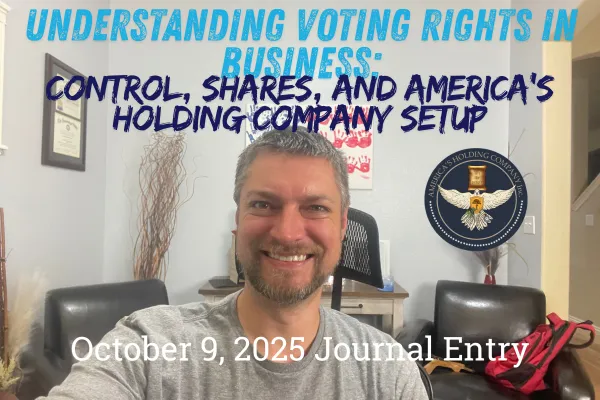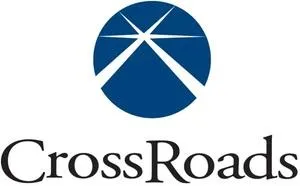We use cookies to improve your experience on our site. By using our site, you consent to the use of cookies. Rejecting cookies will prevent non-essential cookies from loading. Learn more
The Life with Justin Stephens Blog

Understanding Voting Rights in Business: Control, Shares, and America's Holding Company Setup
Hey, Life with Justin Stephens community! Justin here, with a journal entry on an important part of owning a business: Understanding your voting rights. As we document this journey through personal finance, success, business, sales, and marketing, today's reflection is about how decisions get made and why structure matters. Let's dive in, tying it to my vision for America's Holding Company.
The Basics of Voting Rights in Business
Every business has its own process for how they make decisions and decide on what to do. The vast majority of businesses don't hold formal votes or anything like that because they are owned by 1 individual who has total control over the asset. Each share in a company gives you a right to vote within that company, and sometimes different types of shares have different voting rights. For example, a preferred share typically doesn't have a right to vote but they get at the top of the payout list for dividends and in the event of closing down the business they have preferred treatment in the ordeal.
Designing America's Holding Company: Balancing Control and Equity
When I designed America's Holding Company, I did it with this concept in mind of votes being the deciding factor in making decisions. I did it in a way to separate the voting power from the financial benefits of the company so that more people could own the company but the voting power would remain with a group of 9 people: The chairman of the board and 8 board of director members. This lets us remain nimble with the company while also sharing the true value of ownership with others. I did this through creating 3 different common stock shares: Class A, Class B, and Class C.
Class A Shares: For the board of directors and the board, focused on control.
Class B Shares: The retirement shares that anyone can own.
Class C Shares: Designed to be sold on the public market.
This setup allows control to remain tight at the top, while spreading the wealth with those who help us build. My vision for this company is that it is a home for anyone who wants to be a part of our team.
Reflections: Why This Structure Excites Me
From my experiences building AHC, separating control from equity ensures agility while democratizing benefits—empowering more people without chaos. It's a balance that aligns with equitable support.
Why This Matters for Your Journey
Understanding voting rights empowers ownership—in finance (share benefits), business (decision-making), and life (structured growth). It's a reminder that smart design drives collective success.
At Life with Justin Stephens, we share raw Journal Entries like this, alongside Point of View stories, Life Strategy tips, Resources, and Great Causes to inspire your path in finance, business, sales, marketing, and beyond.
Call to Action: Subscribe at justindcstephens.com for daily motivation. Share your thoughts on share structures, and comment: What's one business decision you'd vote on?
P.S. Tomorrow, a Journal Entries post on life updates. Stay tuned!
To your success,
Justin Stephens

Justin Stephens
Justin Stephens is a husband and a father of 3. He is always looking for ways to create the impact that he is chasing, changing the way employees are compensated in America.














